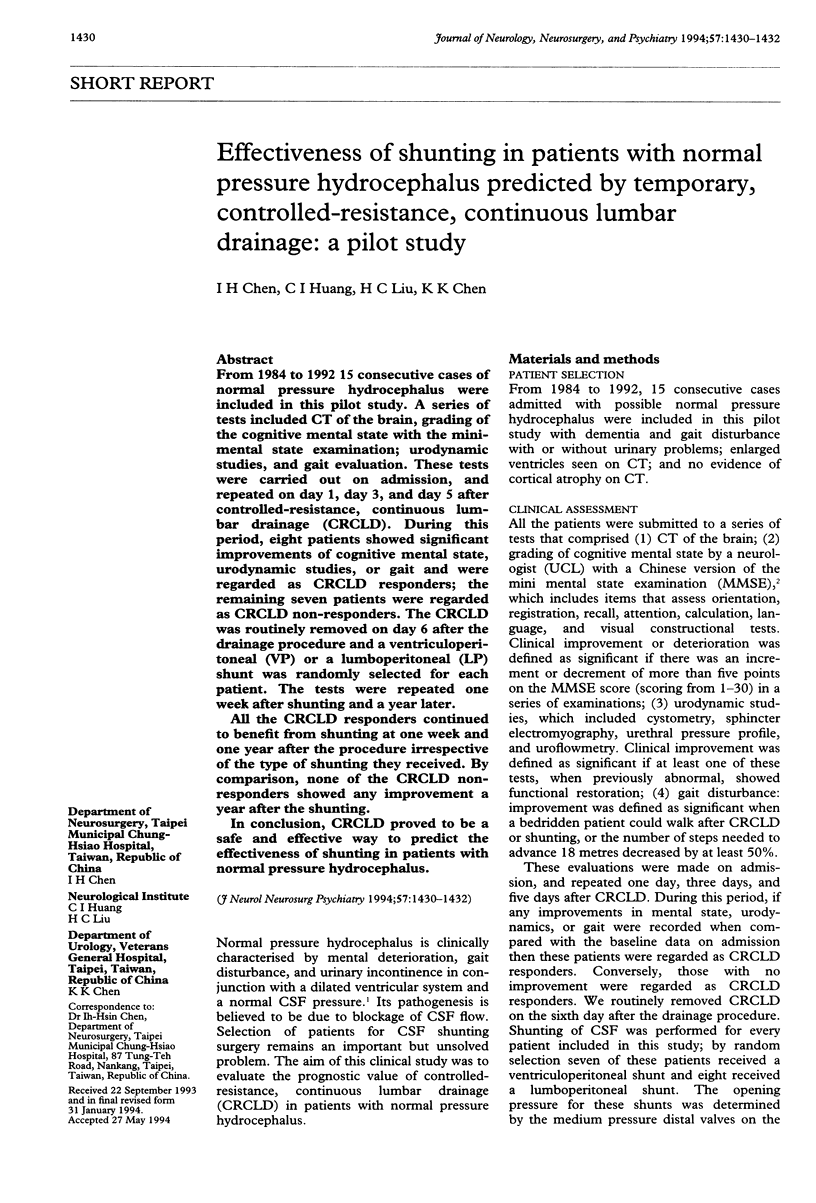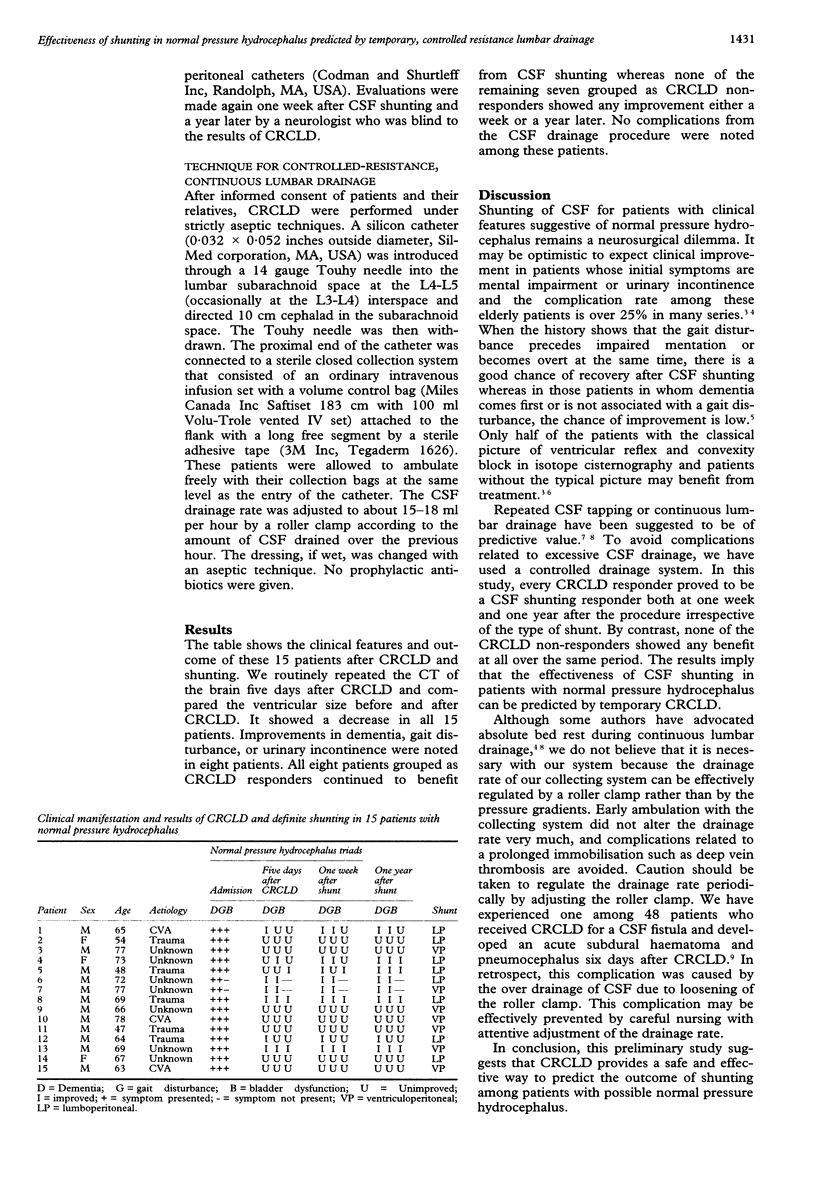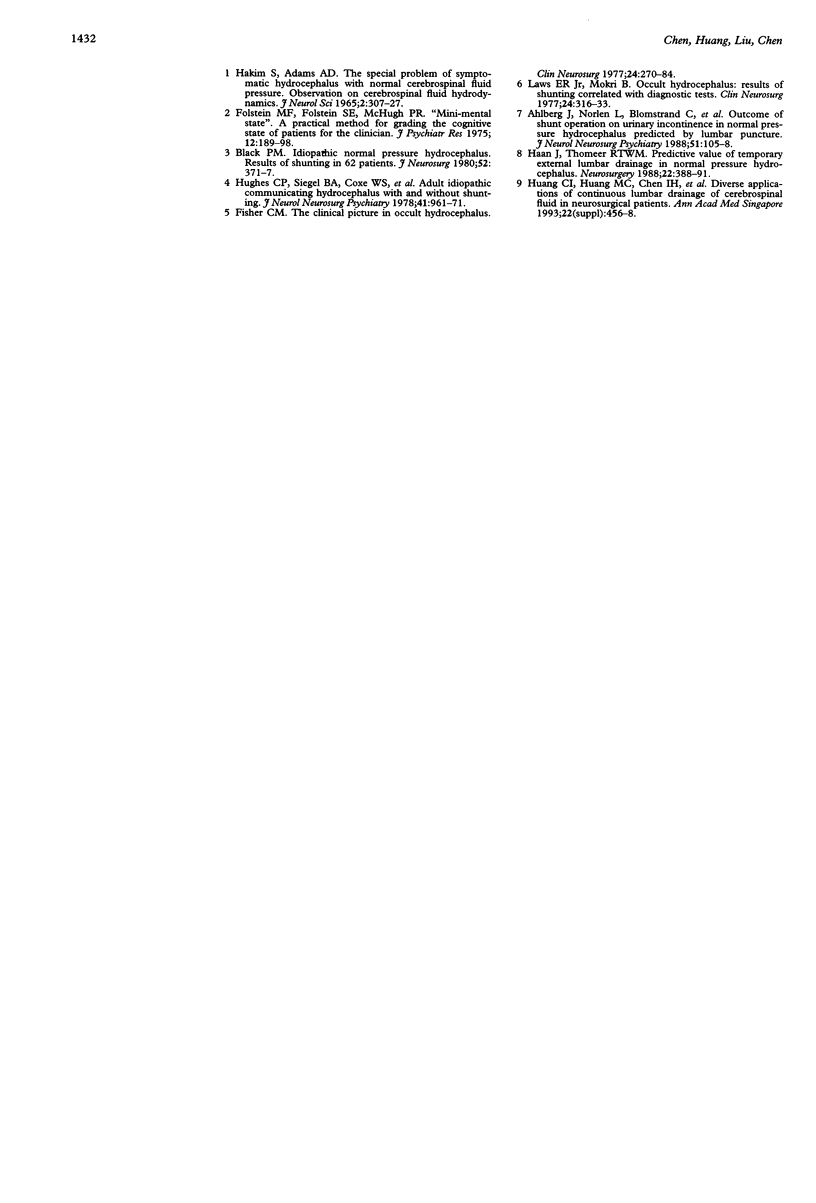Abstract
From 1984 to 1992 15 consecutive cases of normal pressure hydrocephalus were included in this pilot study. A series of tests included CT of the brain, grading of the cognitive mental state with the mini-mental state examination; urodynamic studies, and gait evaluation. These tests were carried out on admission, and repeated on day 1, day 3, and day 5 after controlled-resistance, continuous lumbar drainage (CRCLD). During this period, eight patients showed significant improvements of cognitive mental state, urodynamic studies, or gait and were regarded as CRCLD responders; the remaining seven patients were regarded as CRCLD non-responders. The CRCLD was routinely removed on day 6 after the drainage procedure and a ventriculoperitoneal (VP) or a lumboperitoneal (LP) shunt was randomly selected for each patient. The tests were repeated one week after shunting and a year later. All the CRCLD responders continued to benefit from shunting at one week and one year after the procedure irrespective of the type of shunting they received. By comparison, none of the CRCLD non-responders showed any improvement a year after the shunting. In conclusion, CRCLD proved to be a safe and effective way to predict the effectiveness of shunting in patients with normal pressure hydrocephalus.
Full text
PDF


Selected References
These references are in PubMed. This may not be the complete list of references from this article.
- Ahlberg J., Norlén L., Blomstrand C., Wikkelsö C. Outcome of shunt operation on urinary incontinence in normal pressure hydrocephalus predicted by lumbar puncture. J Neurol Neurosurg Psychiatry. 1988 Jan;51(1):105–108. doi: 10.1136/jnnp.51.1.105. [DOI] [PMC free article] [PubMed] [Google Scholar]
- Black P. M. Idiopathic normal-pressure hydrocephalus. Results of shunting in 62 patients. J Neurosurg. 1980 Mar;52(3):371–377. doi: 10.3171/jns.1980.52.3.0371. [DOI] [PubMed] [Google Scholar]
- Fisher C. M. The clinical picture in occult hydrocephalus. Clin Neurosurg. 1977;24:270–284. doi: 10.1093/neurosurgery/24.cn_suppl_1.270. [DOI] [PubMed] [Google Scholar]
- Folstein M. F., Folstein S. E., McHugh P. R. "Mini-mental state". A practical method for grading the cognitive state of patients for the clinician. J Psychiatr Res. 1975 Nov;12(3):189–198. doi: 10.1016/0022-3956(75)90026-6. [DOI] [PubMed] [Google Scholar]
- Haan J., Thomeer R. T. Predictive value of temporary external lumbar drainage in normal pressure hydrocephalus. Neurosurgery. 1988 Feb;22(2):388–391. doi: 10.1227/00006123-198802000-00020. [DOI] [PubMed] [Google Scholar]
- Hakim S., Adams R. D. The special clinical problem of symptomatic hydrocephalus with normal cerebrospinal fluid pressure. Observations on cerebrospinal fluid hydrodynamics. J Neurol Sci. 1965 Jul-Aug;2(4):307–327. doi: 10.1016/0022-510x(65)90016-x. [DOI] [PubMed] [Google Scholar]
- Huang C. I., Huang M. C., Chen I. H., Lee L. S. Diverse applications of continuous lumbar drainage of cerebrospinal fluid in neurosurgical patients. Ann Acad Med Singapore. 1993 May;22(3 Suppl):456–458. [PubMed] [Google Scholar]
- Hughes C. P., Siegel B. A., Coxe W. S., Gado M. H., Grubb R. L., Coleman R. E., Berg L. Adult idiopathic communicating hydrocephalus with and without shunting. J Neurol Neurosurg Psychiatry. 1978 Nov;41(11):961–971. doi: 10.1136/jnnp.41.11.961. [DOI] [PMC free article] [PubMed] [Google Scholar]
- Laws E. R., Mokri B. Occult hydrocephalus: results of shunting correlated with diagnostic tests. Clin Neurosurg. 1977;24:316–333. doi: 10.1093/neurosurgery/24.cn_suppl_1.316. [DOI] [PubMed] [Google Scholar]


